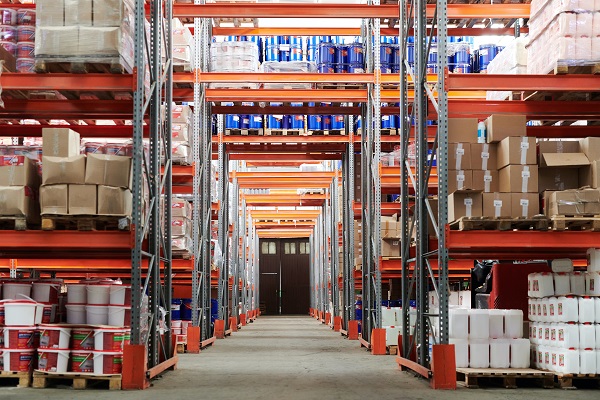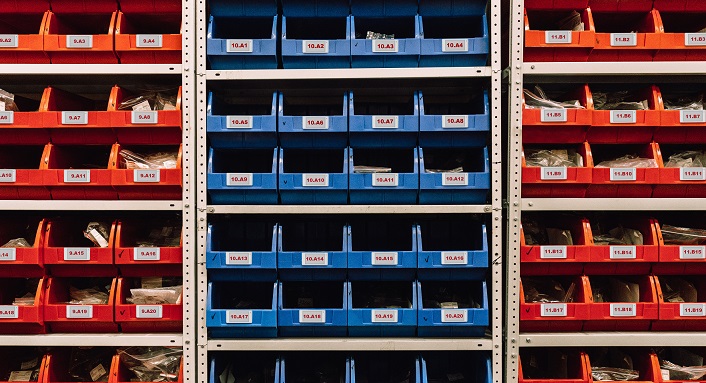It has become increasingly important to operate and maintain an efficient warehouse facility and system in light of the constantly changing market conditions. eCommerce platforms demand efficient facilities and a reliable method for processing and executing customer orders. This is due to the tremendous popularity of eCommerce platforms. Brick and mortar retailers, on the other hand, are still relevant, with 82% of millennials preferring shopping in person. As a result of this increased consumer demand for a more efficient and dependable retailing system, the number of warehousing facilities has been steadily growing.
Maintaining effective and reliable warehouse operations is critical to any modern small warehouse organization layout's smooth raw materials or completed product flow. Despite this, many warehouses still utilize manual techniques for identifying their racking labels, bins, and merchandise, which is incredibly inefficient. The following examines the unique ESL systems and solutions as a dynamic and intuitive substitute for paper-based and manually generated labels and stickers. In this article, you'll learn why and how to use ESL labels in your warehouse to increase productivity.

Making Warehouse Systems More Productive and Efficient
A startling number of small businesses (SMBs) still rely on manual warehouse management and inventory warehouse racking layout software free system in an age of high connectivity and cutting-edge Internet-enabled gadgets. It's no surprise that these warehouses have a low accuracy rate of 60% when it comes to their inventories.
Order picking, labeling, and a slew of other manual tasks necessitate a higher staff level in warehouses. Labor resources account for as much as 70% of the costs of a warehouse design optimization. In other words, as more workers are needed, so go the operating costs and overhead. This would have a significant effect on your financial position.
The Solution? Electronic Shelf Labels
Your Warehouse Can Benefit from a Variety of ESL Applications
Productivity can be improved in various corporate and industrial settings, including retail, shipping, manufacturing, and warehouse racking design, thanks to ESLs. All of these industry verticals require a robust, durable, and reliable system, especially when transmitting and delivering critical data and information.

Some of the more specialized applications for warehouse operations, employ ESLs:
Apps for Asset Management and LBS (Location-Based Services):
Automated systems can benefit from ESL solutions because they are practical and inventive. Product navigation and location management are two terms that go hand in hand. These interactive labels make it easier to locate an item, a gadget, or an asset, especially in large warehouse racking layout designs with many goods.
Applications for Data Collection and Analysis:
Electronic shelf labels have advanced to include functionality other than just price and product labeling. Inventory management that is both precise and comprehensive, large.
Data analysis and a host of other applications:
Apps for Scheduling
Thanks to the wireless connectivity and easy methods, it is possible to schedule ESL features, such as updating pricing or product information at a predetermined day and time. Imagine altering hundreds or even thousands of labels in a paper or sticker-based system. It is possible to update several labels simultaneously how to label warehouse racking or on a scheduled basis using ESLs.
Applications That Are Pushed by Data
ESLs can be an effective marketing strategy in the retail sector, allowing customers to receive information about sales and promotions directly from the label, increasing revenue.
Options for Electronic Shelf Labeling in Your Warehouse
Warehouse layout tool can employ Electronic Shelf Labels in numerous ways, as discussed above. Since there are so many different methods to use ESL, it's only natural that there will be a wide range of ESL solutions available.
What Roles Can Electronic Labels Play in Warehouses ?
A Turnover Deck
Update turnover data remotely and promptly, and thus help reduce workforce turnover.
Shelf Marking
Light shelves with a more intelligent pick-by system.
Billboard
Real-time inventory information is displayed via the MES system.

Segment Labels with ESL
ESL can also be used as a segment label, which is a typical practice. ESL Segment Labels are handy in a warehouse receiving area design because of their size differences, allowing them to be utilized on various racks, shelves, and bins. E-Paper digital displays display information in black and white on many of these labels.
Freezer Labels
Many warehouses had cold storage that could withstand temperatures well below zero degrees Fahrenheit. Paper labels won't suffice in these situations. You can update your information in real-time thanks to ESL Freezer Labels' robust WIFI connectivity and user-friendly displays, allowing real-time updates. Using ESL in freezers as an additional failsafe while monitoring crucial temperature levels in conjunction with sensor methods is possible.
Smart Item Labels for English Language Learners
Not only may ESLs be used as a label for racks and shelves, but they can also be utilized to identify individual items. With the help of ESL Smart Item Labels, you can quickly and easily label any commodity or asset that requires its label. Color and display options are both available for these labels. Because of its wireless connectivity, it is more convenient to get information in real-time or on a schedule
In the last few decades, warehouse facilities and inventory management systems have come a long way. As wireless technologies and the internet become more widely available, businesses are revolutionizing how information is exchanged between them and their customers or employees. Warehouse and inventory management has never been more accessible, more precise, or more user-friendly than it is now, thanks to the advancement of these technologies.
Labeling is one of these improvements. Storage facilities that include hundreds or even thousands of objects benefit significantly from using labels. Warehouse shelf layout Labels, or ESLs, are a revolutionary new type of label made possible because of technological advancements.











